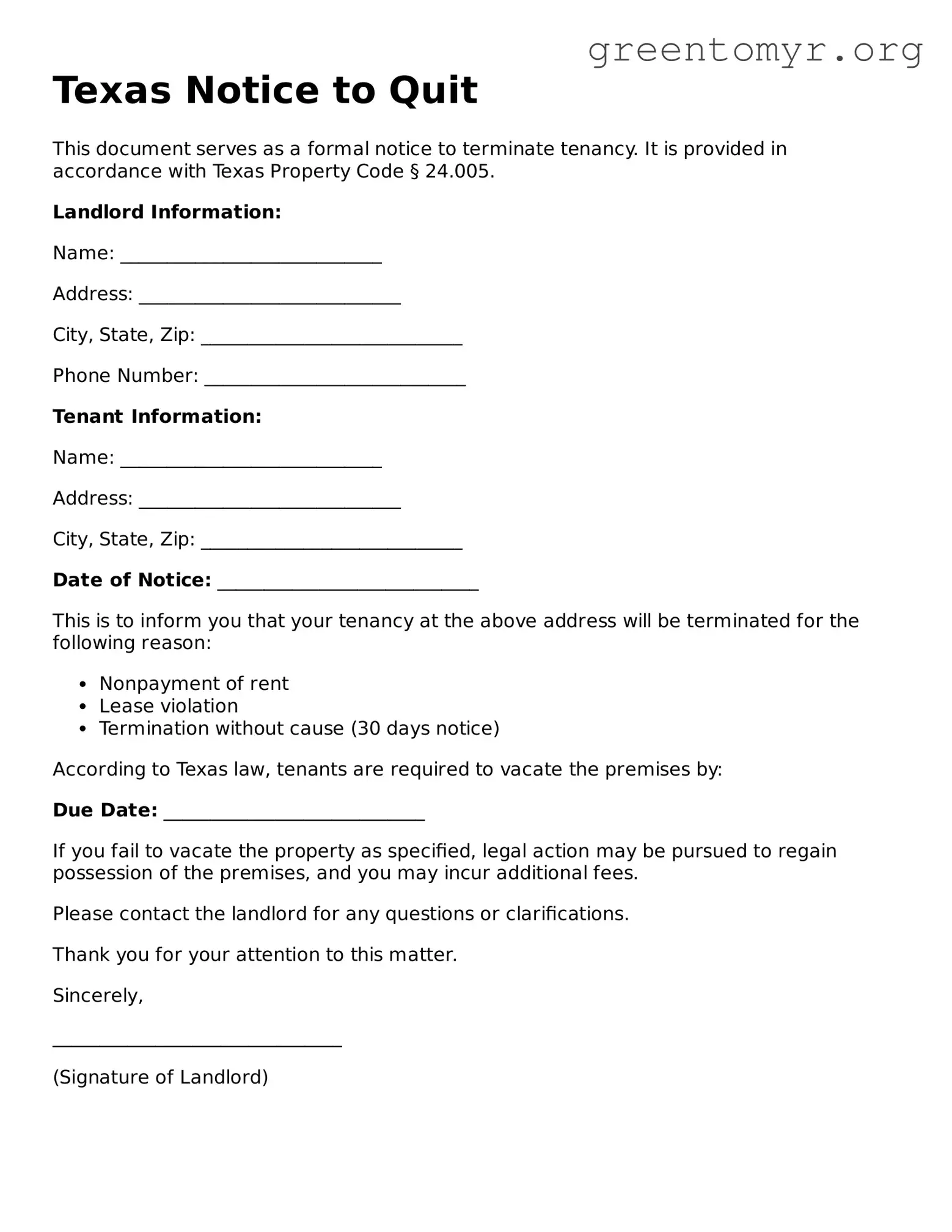Texas Notice to Quit
This document serves as a formal notice to terminate tenancy. It is provided in accordance with Texas Property Code § 24.005.
Landlord Information:
Name: ____________________________
Address: ____________________________
City, State, Zip: ____________________________
Phone Number: ____________________________
Tenant Information:
Name: ____________________________
Address: ____________________________
City, State, Zip: ____________________________
Date of Notice: ____________________________
This is to inform you that your tenancy at the above address will be terminated for the following reason:
- Nonpayment of rent
- Lease violation
- Termination without cause (30 days notice)
According to Texas law, tenants are required to vacate the premises by:
Due Date: ____________________________
If you fail to vacate the property as specified, legal action may be pursued to regain possession of the premises, and you may incur additional fees.
Please contact the landlord for any questions or clarifications.
Thank you for your attention to this matter.
Sincerely,
_______________________________
(Signature of Landlord)
